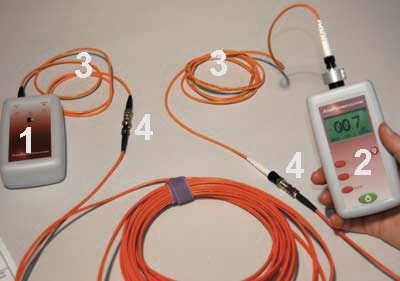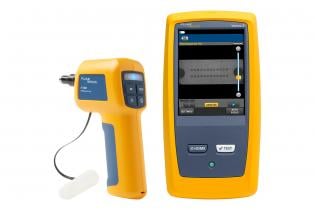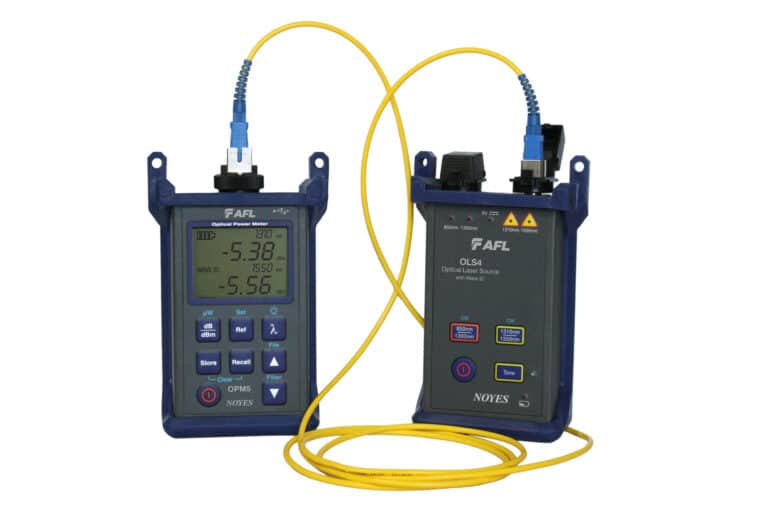The Complete Guide About fibre testing equipment for industrial processes
The Complete Guide About fibre testing equipment for industrial processes
Blog Article
Checking Out Advanced Techniques in Fiber Measurement and Their Industry Impact
In today's fabric sector, accurate fiber measurement is necessary for optimizing production procedures and conference sustainability goals. With the increase of ingenious imaging and logical devices, you can acquire much deeper understandings into fiber structure and make-up. This shift not just enhances effectiveness yet additionally aligns with industry requirements. As these sophisticated methods advance, you could wonder how they can even more transform producing methods and effect the future of textiles.
The Value of Accurate Fiber Measurement in Fabric Production

Innovative Imaging Technologies for Fiber Analysis
When it comes to fiber analysis, cutting-edge imaging technologies are video game changers. High-resolution microscopy methods and spectroscopic analysis methods provide you with detailed understandings right into fiber framework and structure. These improvements not just improve accuracy but also simplify your measurement processes.
High-Resolution Microscopy Techniques
High-resolution microscopy techniques have actually reinvented fiber analysis, permitting researchers to visualize fibers at extraordinary levels of detail. With techniques like scanning electron microscopy (SEM) and transmission electron microscopy (TEM), you can observe fiber morphology, surface attributes, and cross-sections with amazing quality. These methods allow you to differentiate between different fiber kinds and examine their architectural stability. You'll find that high-resolution imaging assists identify flaws, inclusions, and various other crucial qualities that can affect material efficiency. Innovations in digital imaging software have actually improved photo handling, making it simpler to examine and analyze data. By embracing these cutting-edge strategies, you can drive greater accuracy in fiber measurement and add to advancements in various markets, from fabrics to compounds.
Spectroscopic Evaluation Approaches
Spectroscopic analysis methods have emerged as powerful tools for fiber characterization, supplying understandings that enhance high-resolution microscopy. You can utilize methods like infrared (IR) spectroscopy, which aids recognize the chemical structure of fibers by gauging molecular vibrations. Raman spectroscopy supplies another layer of information, allowing you to evaluate molecular structures via scattering of monochromatic light. These techniques not only enhance your understanding of fiber properties but also make it possible for the discovery of contaminations and architectural variants. By integrating spectroscopic techniques with conventional microscopy, you acquire a more comprehensive view of fibers' physical and chemical attributes, improving your research study accuracy. Ultimately, these innovations can especially influence material selection and quality assurance in numerous markets.
Advanced Analytical Tools and Their Applications
As you discover the domain name of fiber dimension, you'll discover that innovative logical tools play an important duty in boosting precision and performance. Methods like high-performance liquid chromatography (HPLC) and gas chromatography (GC) permit you to examine fiber composition with impressive accuracy. These devices enable you to identify certain components and impurities, making certain quality assurance in your products.Additionally, using scanning electron microscopy (SEM) gives you a detailed sight of fiber structure, assisting you understand exactly how various treatments influence performance. Modern software application also linked here enhances information analysis, making it less complicated to interpret complicated outcomes and collaborate throughout groups.

Impact of Fiber Measurement on Manufacturing Performance
While precise fiber dimension might look like a small information, it significantly affects production performance in the fabric industry. When you spend in exact fiber measurement techniques, you can maximize basic material usage and decrease waste. This causes much better resource appropriation, enabling you to produce high-grade materials without overusing resources.By understanding fiber characteristics, you can customize production procedures to certain materials, boosting your workflow and lowering downtime. For example, recognizing the precise tensile strength of fibers allows you adjust equipment setups for optimum efficiency. This not only speeds up production however additionally ensures regular item quality.Moreover, precise fiber dimension helps you determine problems early in the assembly line, stopping costly reworks and delays (optical measurement system). In general, carrying out advanced fiber measurement techniques enhances procedures, boosts effectiveness, and inevitably enhances success. In today's open market, every information counts, and precise fiber measurement is a game-changer
Sustainability Considerations in Fiber Evaluation Techniques
When you examine fiber, it's important to contemplate sustainable practices that can lessen environmental impact. Utilizing green measurement approaches and decreasing waste in your analyses can significantly boost your general sustainability. Additionally, incorporating lifecycle analysis right into your techniques can supply a clearer image of your fiber's ecological impact.
Eco-Friendly Measurement Techniques
Taking into consideration the expanding demand for sustainability in various industries, taking on environmentally friendly dimension approaches for fiber evaluation has actually become important. You can start by utilizing safe solvents and naturally degradable products in your testing procedures. These options not just decrease environmental impact yet also boost security for your team. Executing digital dimension strategies can better lessen waste, as they usually call for less physical samples and resources. In addition, leveraging cutting-edge modern technologies like near-infrared spectroscopy can produce exact outcomes without dangerous chemicals. By selecting these greener approaches, you add to an extra sustainable future while keeping high criteria in fiber high quality. Inevitably, incorporating eco-friendly practices into your fiber evaluation not just straightens with consumer worths however also boosts your brand's credibility.
Decreasing Waste in Evaluation
To efficiently reduce waste in fiber analysis, you can carry out techniques that simplify your screening procedures and minimize source intake. Begin by maximizing example dimensions; utilizing smaller sized examples can generate precise outcomes while preserving materials. Next off, buy multifunctional tools that enables different examinations without needing several tools, lowering power and resource usage. You should additionally consider adopting electronic tools for information collection and analysis, which can reduce paper waste and boost efficiency. On a regular basis educating your group on lasting practices guarantees everyone's on board with waste reduction goals. Working together with vendors that prioritize sustainability can even more enhance your efforts, allowing you to analyze fibers while keeping a dedication to environmental obligation.
Lifecycle Analysis Assimilation
Incorporating lifecycle analysis (LCA) right into fiber evaluation techniques can substantially improve sustainability initiatives. By taking a look at the environmental influences of fibers from production to disposal, you can recognize areas for improvement. This technique helps you recognize look these up resource intake, power usage, and waste generation throughout the fiber's life.When you integrate LCA, you're not simply determining fiber characteristics; you're likewise considering the environmental impact. This holistic sight enables you to make informed choices that focus on sustainability. You might pick fibers that require fewer sources or have a reduced carbon impact. Eventually, LCA encourages you to optimize procedures, lower waste, and promote eco-friendly choices in fiber production, straightening your experiment global sustainability goals.
Market Requirements and Regulations Shaping Fiber Measurement
As the demand for high-quality fiber products grows, recognizing the industry standards and guidelines that govern fiber dimension becomes necessary. These guidelines guarantee consistency, accuracy, and security in the dimension procedure, which eventually influences item top quality. Organizations like ASTM International and ISO set forth standards that suppliers must adhere to, covering different elements such as fiber identification, strength testing, and moisture content analysis.

Future Fads in Fiber Measurement and Textile Production
How will innovations in technology improve fiber measurement and textile production? You'll see a shift toward automation and real-time information evaluation, improving precision and efficiency. Smart sensors will certainly monitor fiber buildings continuously, permitting prompt adjustments in manufacturing. This suggests you can expect higher high quality textiles with less waste.Moreover, AI and artificial intelligence will forecast fads in consumer preferences, enabling producers to adjust promptly. fibre testing equipment. By incorporating blockchain modern technology, you'll have far better traceability of products, ensuring sustainability and ethical sourcing.Virtual reality and enhanced truth will contribute as well, using immersive training experiences for workers on fiber handling and manufacturing processes.As you accept these modifications, the textile market will transform into a more responsive, lasting, and cutting-edge field, establishing brand-new criteria for high quality and performance. The future of fiber dimension and textile manufacturing is intense, and it's time to get on board
Frequently Asked Concerns
What Are one of the most Typical Fiber Types Measured in the Sector?
In the market, you'll typically experience all-natural fibers like cotton and wool, along with artificial alternatives such as polyester and nylon. Each kind has distinct buildings, impacting their measurement and see here now application in different items.
Just How Do Fiber Dimensions Influence Consumer Product Top Quality?
Fiber dimensions directly affect consumer product high quality by making certain uniformity, resilience, and efficiency. When you recognize these metrics, you can make educated options, leading to improved fulfillment and far better total experiences with the items you use.
What Training Is Needed for Fiber Measurement Technicians?
To end up being a fiber measurement specialist, you'll require specific training in textile science, measurement methods, and devices procedure. Hands-on experience and qualifications can enhance your skills, making you competent in exact fiber evaluation and high quality guarantee.
Are There Any Kind Of Qualifications for Fiber Measurement Professionals?
Yes, there are certifications for fiber measurement professionals. You can pursue alternatives like the Qualified Fiber Optics Specialist (CFOT) or numerous industry-specific qualifications that improve your competence and reliability in fiber dimension and screening.
Exactly How Can Local Business Execute Fiber Dimension Techniques Efficiently?
You can implement fiber dimension strategies efficiently by investing in economical devices, educating your group, and establishing clear methods. Collaborate with industry professionals and continuously fine-tune your processes to enhance precision and performance over time.
Report this page